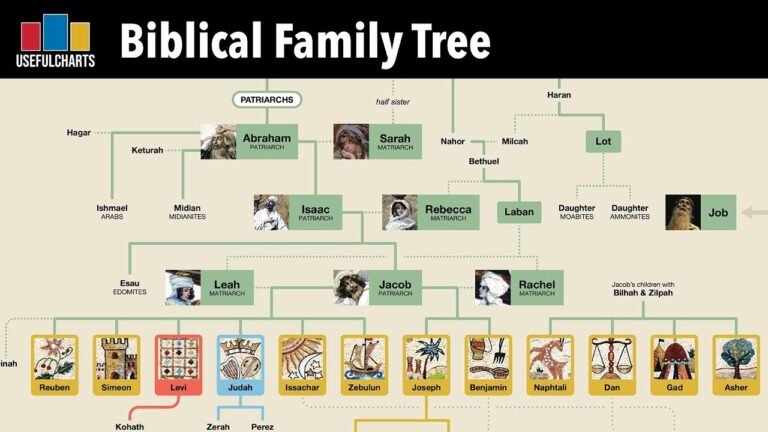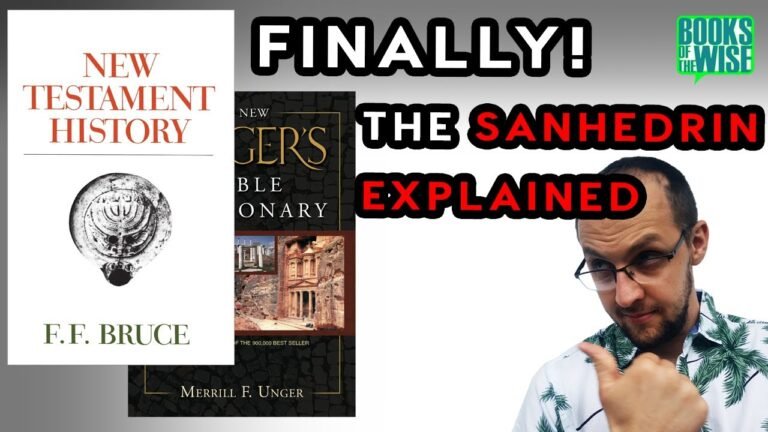Exploring the Biblical Abraham Family Tree
The biblical Abraham family tree serves as a fascinating exploration of lineage and faith, tracing the roots of one of history’s most significant figures. This intricate network not only highlights Abraham’s pivotal role in the Abrahamic religions but also reveals the deep connections among his descendants, including Isaac, Jacob, and their respective tribes. By examining this family tree, we gain valuable insights into the cultural and spiritual heritage that has shaped millions of lives across generations, emphasizing the enduring legacy of Abraham’s faith and the profound impact of his family on religious history.
What is Abraham’s lineage according to the Bible?
Abram, later known as Abraham, traces his lineage back to Shem, one of the sons of Noah, who received a divine blessing. This lineage is significant, as it contrasts with the descendants of Ham, particularly those from Canaan, who were cursed to serve Shem’s descendants. God’s promise of the land of Canaan to Abraham and his descendants further solidifies the importance of this lineage, establishing a foundational narrative for the Abrahamic faiths and their connection to the covenant relationship with God.
What are the names of Abraham’s sons in the correct order?
Abraham, a pivotal figure in biblical history, had one son with his wife, Sarah: Isaac. Born when Abraham was well into his old age, Isaac was the fulfillment of God’s promise to Abraham that he would become the father of many nations. This miraculous birth not only solidified Abraham’s covenant with God but also set the stage for the lineage of the Israelites.
After Sarah’s passing, Abraham married Keturah, with whom he had six additional sons: Zimran, Jokshan, Medan, Midian, Ishbak, and Shuah. Each of these sons played a role in the expansion of Abraham’s legacy, contributing to various tribes and nations in the region. The diverse lineage stemming from Keturah illustrates the broad impact of Abraham’s family beyond just Isaac and the Israelites.
Together, these sons represent the multifaceted heritage of Abraham, showcasing his significance in multiple lineages. Isaac’s descendants would lead to the Israelites, while the children of Keturah would establish other groups and nations. This rich tapestry of family underscores the importance of Abraham in the biblical narrative and his lasting influence on the world.
Who are Abraham’s descendants in modern times?
The descendants of Abraham today include a diverse array of nations and groups, reflecting the significant historical and cultural impact of his legacy. Among them are the Israelites, comprising both Jews and the ten lost tribes of Israel, who have maintained a distinct identity through millennia. The Ishmaelites, often identified with various Arab populations, also trace their lineage back to Abraham’s son Ishmael. Additionally, the Edomites, linked to the ancient Romans, and other tribes such as the Amalekites, Kenizzites, and Midianites, further illustrate the rich tapestry of Abraham’s descendants, each contributing to the complex narrative of heritage and faith that continues to shape the world today.
Unraveling the Roots of Faith
Faith is a profound tapestry woven from personal experiences, cultural narratives, and philosophical inquiries, each thread contributing to its intricate design. At its core, faith often emerges from the search for meaning and connection in a world that can feel chaotic and uncertain. It invites individuals to explore their beliefs, question their assumptions, and engage with the mysteries of existence. By unraveling the roots of faith, we uncover not just the stories that shape our understanding, but also the universal longing for belonging and understanding that transcends boundaries, uniting diverse perspectives in a shared journey toward enlightenment.
Generations of Promise and Legacy
In a world defined by rapid change, the promise of future generations lies in their ability to learn from the past while innovating for a better tomorrow. Each generation carries with it a legacy of experiences, wisdom, and dreams, shaping the values and aspirations of those who follow. As we navigate the complexities of modern life, it becomes essential to nurture this intergenerational dialogue, ensuring that the lessons learned are not forgotten but rather transformed into a foundation for progress. Embracing the unique strengths of each era, we can cultivate a vibrant tapestry of hope and resilience, uniting past, present, and future in a shared vision of possibility.
Discovering Ancestry in Scripture
Exploring our ancestry through scripture offers a profound connection to the past, revealing the rich tapestry of faith and heritage that has shaped countless generations. The narratives found in sacred texts not only chronicle the lives of our spiritual forebears but also serve as a mirror reflecting our own struggles, triumphs, and aspirations. By delving into these ancient stories, we uncover lessons that resonate across time, providing guidance and wisdom for navigating the complexities of modern life.
As we engage with the teachings and events documented in scripture, we can trace the threads of our lineage back to the foundational principles that unite us as a community of believers. This journey fosters a deeper understanding of our spiritual identity while cultivating a sense of belonging within a larger narrative. By embracing our ancestry in this way, we honor the legacy of those who came before us and strengthen our commitment to carry their values forward into the future.
The Lineage of a Covenant
Throughout history, covenants have served as foundational agreements that bind individuals and communities together, often transcending generations. These sacred bonds are not merely legal contracts; they embody trust, commitment, and a shared vision for the future. From ancient texts to modern interpretations, the lineage of a covenant reflects humanity’s enduring desire for connection, stability, and mutual respect. Each agreement carries the weight of tradition while adapting to the evolving needs of society, illustrating how deeply rooted values can foster resilience and growth.
As we examine the lineage of these covenants, we uncover a rich tapestry of cultural and spiritual significance. They often emerge in times of crisis or transformation, providing a framework for reconciliation and cooperation. The stories embedded in these agreements highlight the importance of dialogue and understanding, emphasizing that the strength of a covenant lies not just in its terms, but in the relationships it nurtures. This legacy serves as a reminder that our commitments to one another can pave the way for a more harmonious and united future, where the spirit of collaboration thrives.
Heritage of the Patriarchs Revealed
The legacy of our ancestors is woven into the very fabric of our culture, revealing profound insights into their values and aspirations. From ancient texts to oral traditions, the stories of the patriarchs illuminate the principles that guided their lives and shaped their communities. These narratives serve as a bridge between past and present, offering lessons in resilience, wisdom, and moral integrity that remain relevant today.
As we explore the heritage of the patriarchs, we uncover a treasure trove of knowledge that not only informs our identity but also inspires future generations. Each tale encapsulates the struggles and triumphs of those who came before us, reminding us of our shared humanity and the importance of preserving our history. By honoring these legacies, we foster a deeper understanding of ourselves and cultivate a sense of belonging that transcends time and space.
The biblical Abraham family tree serves as a fascinating tapestry of faith, lineage, and cultural heritage, connecting diverse groups across centuries. By exploring this intricate genealogy, we gain deeper insights into the foundations of Judaism, Christianity, and Islam, highlighting the shared roots that bind these faiths together. Understanding this rich heritage not only enriches our knowledge of religious history but also fosters a sense of unity and respect among different traditions.







